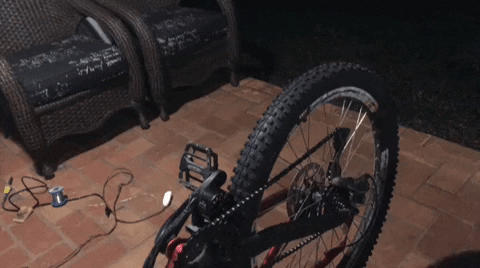Hey guys, since a few seemed interested in this project I will make this thread my build log for the various revisions and ideas I may try
Before I made my first board I always wanted a ebike, but then esk8 happened, since I had some spare parts laying around why not?
This is a friction based ebike, the motor can grips directly on the tire, no gear, no belts, no complications, it’s intended just as a assist motor, if you try to push huge currents it will overheat the motor and accelerate tire wear
This first version is just a proof of concept, the motor mount is made from laser cut 3/16" steel since its really cheap
This is the parts involve so far
- FSESC 4.12
- TB6355 230Kv motor
- 5S3P NCR18650GA battery
I’m running 25 A motor 15 A battery, definitely need to increase the motor current a bit since it can do better on hills, and make it have two power settings

Today I did the first long ride, 32 km ridden and 148 Wh consumed, so 4.68 Wh/km, and that is without regen enabled, with a tire that’s not optimum for motor engagement and with a bike that have the rear hub completely destroyed with lots of friction, 3 Wh/km seems possible, if not lower
Average speed was 20 km/h, for a guy that haven’t done any serious cycling for a few months and is considerably out of shape. Since we have a lot of hills around here my average speed used to be around 10 km/h
Apart from the wires from the throttle switch breaking mid ride and having to use the bare wires to engage the motor and the battery running out at around 29 km, it was great
The final version will have way more discrete motor mount, all electronics and batteries will be inside a water bottle with a quick disconnect, proportional regen using the dead zone of one of the brake levers, a compact oled display on the handle bars and single button operation with various functions and a secondary battery connection for longer rides
For anyone that have parts laying around I really recommend, eSk8 was making me fat 







